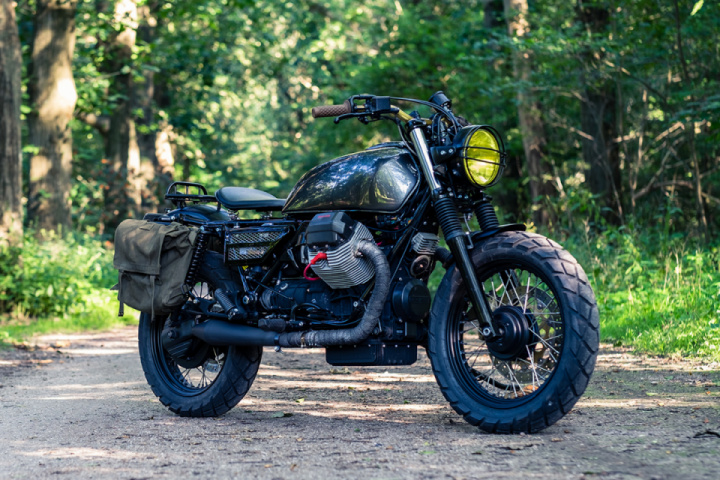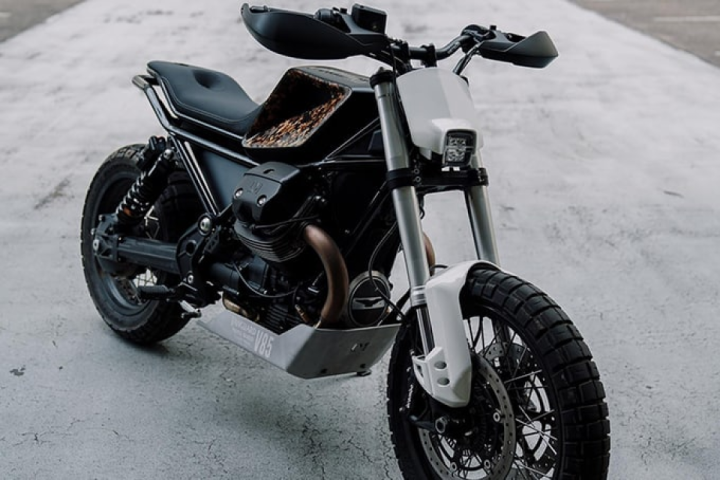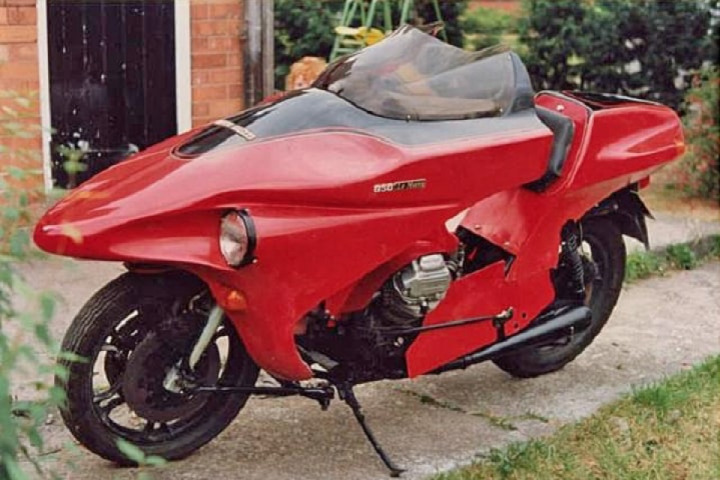A Little Moto Guzzi Bicilindrica History
In the early 1930s, Moto Guzzi badly needed a new design to replace its team’s elderly 500cc 4-valve singles. Guzzi’s 250cc single was dominating the 250 GP class, and it had a compact unit-construction engine with a horizontal cylinder, leaving lots of room in the middle of the frame. Carlo Guzzi hit on the idea of filling this space with a second cylinder to produce a light, compact but unconventional engine. The ensuing engine had the cylinders spaced at 120 degrees, a rangy build completely at odds with all previous V-twin trends, and never since emulated.
The new Moto Guzzi Bicilindrica made its racing debut in October 1933 in the Italian GP at Rome’s Autodromo del Littorio. During the mid-1930s, the Moto Guzzi Bicilindrica swept all before it on the race tracks of Europe, winning the Italian GP on three occasions in 1934-1936. But the race that established the Bicilindrica as the leading 500cc bike of its era was Stanley Woods’ remarkable victory in the 1935 Isle of Man Senior TT, giving Moto Guzzi its first of several victories in the Isle of Man TT. Woods also won the Lightweight TT the same week on a Guzzi single to complete a unique double.
Strangely, Woods’ TT victory didn’t lead to widespread adoption by its British rivals of the advanced design features of the Guzzi Bicilindrica. An emphasis on power outputs rather than handling improvements characterized the second half of the 1930s, as more and more supercharged machines appeared on the scene. Against the 80 horsepower-plus blown bikes from BMW and Gilera in the 500cc class alone, the Bicilindrica’s hard-earned 50 horsepower at slightly increased revs of 7,500rpm by 1935 was insufficient to keep the bike in contention — except on twisty circuits, where its lighter weight and easier handling ensured a steady run of successes. Ombono Tenni and
teammate Giordano Aldrighetti defeated the new supercharged BMW Kompressor twins to finish 1-2 in the 1936 Italian GP at Monza, and by the end of 1937 the factory had produced a prototype water-cooled and supercharged Bicilindrica, though it never debuted in competition.
Instead, Carlo Guzzi focused on gradually improving the Bicilindrica’s cycle parts and engine, aiming to reduce weight and improve handling. A new frame was produced, with uprated versions of the Brampton girder forks and the rear section made from light alloy pressings.
It was the 1949 version of the Bicilindrica that represented the ultimate iteration of the Moto Guzzi 120-degree V-twin. A comprehensive redesign saw increased use of light alloy, which lowered the weight to 319 pounds, while the rather massive construction of the steel frame cradle was lightened and the suspension units exposed. The ungainly looking fuel tank perched on top of the spine frame was replaced by an elegant combined tank and front number plate cowl, with the later-to-be-typical Moto Guzzi steering column sprouting above it, with narrow handlebars and a friction steering damper.
 Follow
2.6K
Follow
2.6K




















